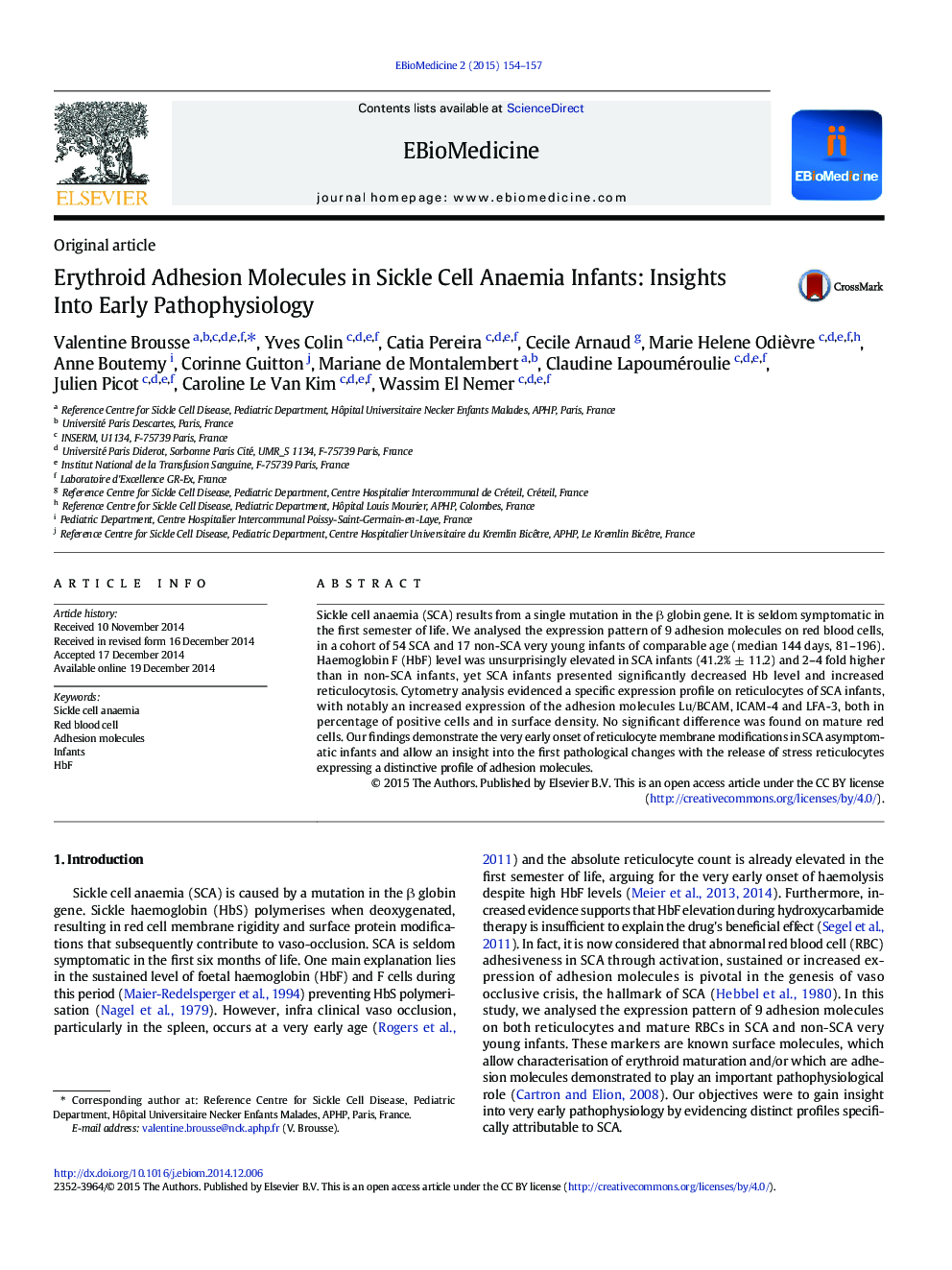| Article ID | Journal | Published Year | Pages | File Type |
|---|---|---|---|---|
| 2121320 | EBioMedicine | 2015 | 4 Pages |
•Haemolytic anaemia is present in the first semester of life in asymptomatic infants with sickle cell anaemia.•Reticulocyte membrane modifications and stress reticulocytosis occur even when HbF production is still high.•Reticulocytes of SCA infants display a specific profile with notably an increased expression of the adhesion molecules Lu/BCAM, ICAM-4 and LFA-3.
Sickle cell anaemia (SCA) results from a single mutation in the β globin gene. It is seldom symptomatic in the first semester of life. We analysed the expression pattern of 9 adhesion molecules on red blood cells, in a cohort of 54 SCA and 17 non-SCA very young infants of comparable age (median 144 days, 81–196). Haemoglobin F (HbF) level was unsurprisingly elevated in SCA infants (41.2% ± 11.2) and 2–4 fold higher than in non-SCA infants, yet SCA infants presented significantly decreased Hb level and increased reticulocytosis. Cytometry analysis evidenced a specific expression profile on reticulocytes of SCA infants, with notably an increased expression of the adhesion molecules Lu/BCAM, ICAM-4 and LFA-3, both in percentage of positive cells and in surface density. No significant difference was found on mature red cells. Our findings demonstrate the very early onset of reticulocyte membrane modifications in SCA asymptomatic infants and allow an insight into the first pathological changes with the release of stress reticulocytes expressing a distinctive profile of adhesion molecules.
